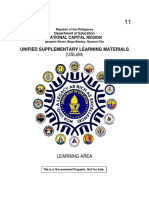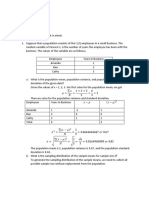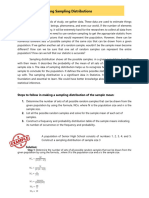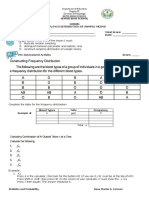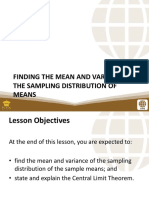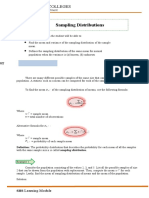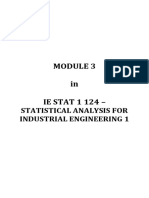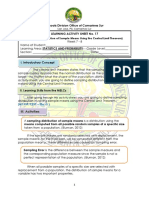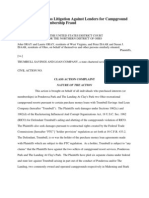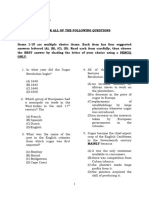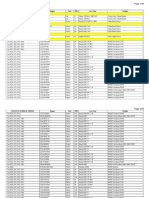0% found this document useful (0 votes)
129 views12 pagesW6-Sampling Distributions
This document contains a module on statistics and probability from the Unified Supplementary Learning Materials for grade 11. It includes a pre-test on sampling distributions and sample means. It then provides an example to calculate the population mean, variance, and standard deviation using data on employees' years working at a business. Finally, it introduces how to construct the sampling distribution of sample means for this population data by taking samples of size 2 and calculating their means.
Uploaded by
Ann AloCopyright
© © All Rights Reserved
We take content rights seriously. If you suspect this is your content, claim it here.
Available Formats
Download as PDF, TXT or read online on Scribd
0% found this document useful (0 votes)
129 views12 pagesW6-Sampling Distributions
This document contains a module on statistics and probability from the Unified Supplementary Learning Materials for grade 11. It includes a pre-test on sampling distributions and sample means. It then provides an example to calculate the population mean, variance, and standard deviation using data on employees' years working at a business. Finally, it introduces how to construct the sampling distribution of sample means for this population data by taking samples of size 2 and calculating their means.
Uploaded by
Ann AloCopyright
© © All Rights Reserved
We take content rights seriously. If you suspect this is your content, claim it here.
Available Formats
Download as PDF, TXT or read online on Scribd
/ 12


